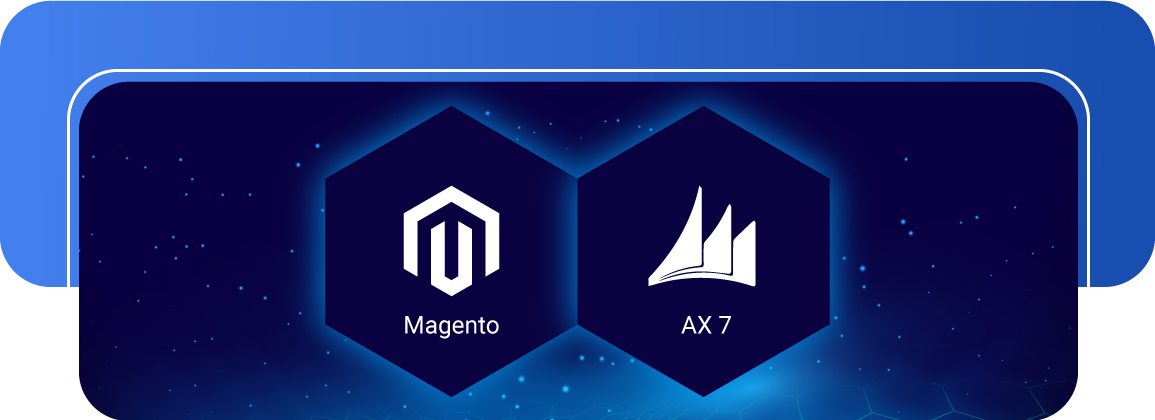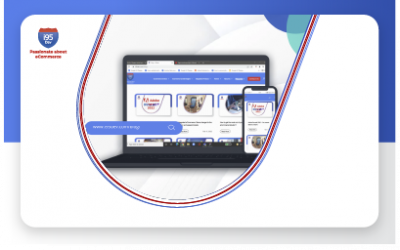eCommerce for Microsoft Dynamics
AX 7 (Dynamics 365 for Operations)

Microsoft Dynamics AX has come a long way from its first release, under Microsoft, Axapta 3.0 in 2002; and its early beginnings as Concord XAL (1991), IBM Axapta (1998), and Axapta 2.1 (2000). Below is a quick overview of the major changes that Microsoft has introduced starting Axapta 3.0 to Dynamics AX 7 (or better known today as Dynamics 365 for Operations).
Evolution of Dynamics AX
| Version | Release Date | Summary |
| Axapta 3.0 | October 2002 | First release under Microsoft after the acquisition of Navision A/S. Microsoft took Axapta 2.5 (released in October 2001) forward and released Axapta 3.0, which supported 17 countries and introduced new security model, license configuration, and the enterprise portal. |
| Microsoft Dynamics AX 4.0 | March 2006 | After rebranding Microsoft Business Solutions to Microsoft Dynamics in 2005, Axapta was also rebranded to AX. Along with the new branding, Microsoft Dynamics AX 4.0 was first for a number of important features like the service management module, AD authentication, CLR interoperability, AOS as a true Windows service, support for Unicode, application integration framework (AIF), and more. |
| Microsoft Dynamics AX 2009 | June 2008 | With AX 2009 also came the similar look and feel of the Office products. While the generic application was expanded with modules like global address book, multisite functionality, compliance module, etc. a lot of Microsoft technologies were also introduced; like workflows based on WCF, the reporting in SSAS/SSRS, role centers based on SharePoint and X++ supported MS SQL statements. |
| Microsoft Dynamics AX 2012 | September 2011 | One of the biggest releases of AX, made available in 25 countries and in 23 languages, introduced many changes and improvements both on the technical and application aspect. Ribbon menu and action panes made their way, role centers were improved, the modules got rearranged and modules like “Sales and marketing” and “Procurement and sourcing“ emerged, and the licensing module was completely revised.Building on the model of the global address book, more global entities like organization, workers and items were introduced. Role-based security was introduced, AIF was redesigned and changes were done to the database structure to support the “metadata” based model. General ledger, HR, and Inventory management were redesigned. And more. |
| Microsoft Dynamics AX 2012 R2 | December 2012 | Changes did not stop for AX 2012 there. In the next few years, more changes were introduced and the application was further refined. The “Feature pack” for AX 2012, released early 2012, included the first version of the Retail module.Microsoft Dynamics AX 2012 R2, released in December 2012, which entailed database splitting and partitioning also introduced BI cubes, retail e-commerce and many other improvements to the existing business logic and processes. |
| Microsoft Dynamics AX 2012 R3 | Apr 2014 | In AX 2012 R3, a wide range of new modules were introduced (like warehouse management, etc.) and the existing modules got a major overhaul as well; with the Retail module receiving the most attention. AX 2012 R3 also saw many system upgrades like Azure deployments, Cloud support and more. |
| Dynamics AX 7 (Dynamics 365 for Operations) | Mar 2016 | While AX 2009 and 2012 included a number of significant changes, Microsoft has taken giant strides with Microsoft Dynamics AX 7 (now better known as Dynamics 365 for Operations) with a number of significant architectural, technical, functional, and UI enhancements to live up to the CLOUD FIRST, MOBILE FIRST, and INTEGRATED/ INTERCONNECTED mantra of Microsoft CEO Satya Nadella. |
What’s new in AX 7?
Here is a quick summary of the major changes made in Dynamics AX 7 (Dynamics 365 for Operations):
- Cloud First
- Microsoft Azure – Dynamics AX 7 was redesigned as a cloud (Azure) first application, in line with other Microsoft flagship products, to offer businesses what they need, when they need it. Enhancements started in Dynamics AX 2012 R3 were extended to Dynamics AX 7 and a number of architecture and technology changes were made to make effective use of the cloud platform – like deprecating slow SOAP based AIF services, etc.
- Mobile First
- User Interface – According to Microsoft, productivity is about empowering people and not simply enacting artificial technological walls that force people to work in predefined ways. Dynamics AX 7 was redesigned to enable its users to access the application from a broad range of devices and platforms, anytime, from any location. The application is completely changed from the rich multi-window client of AX2012 to a single window flat application running in a browser.
- Business First
- Speed and Simplicity – Thanks to the cloud-optimized platform, AX 7 will require significantly less deployment time and lower hosting costs; without compromising on the security.
- Licensing – The licensing with AX 7 (and Dynamics 365) will change from its existing user based license to a more refined role/ permission based license. There is no up-front purchase of software and a client can pay for the users they need. The new pricing makes way for businesses to pay more only as their business grows.
- Workspaces – Workspaces replace role center and have been designed to help a user focus on the most important aspects of their job. Users can now view and act on what they need from this single window.
- Transition from AX 2012 R3 – From a features perspective, AX 7 is not a complete re-write from AX 2012 R3. There are a lot of things that are common making it convenient for users/ businesses to adopt and transition from AX 2012 to AX 7.
- Life Cycle Services (LCS) – With improved Life Cycle Services (LCS), Microsoft promises improved reliability and quality of the Dynamics implementation. The new LCS will also make way for easier patches and upgrades.
- Data First
- High Availability and Data Recovery – With AX 7 database running on SQL Azure, Microsoft has now brought data to the center stage. Microsoft is responsible for the uptime availability of the SQL Azure database. The AX 7 production database is replicated across multiple Azure Data Centers and the secondary database is synchronized within 5 seconds. This means that an AX7 customer automatically gets high availability and disaster recovery services just by running the database in SQL Azure.
- Business Intelligence – One of the major and significant change made in AX 7 is the seamless integration of business intelligence tools into workspaces in AX 7. Business Intelligence is now near real time using Data Entities and Aggregate Data Entities in AX7.
- Customer First
- Common Data Model – With Common Data Model, Microsoft has also made way for effortless communication and seamless interoperability with other Microsoft family of products – Visual Studio, Office 365, Power BI, SharePoint, and more. This, while improves user productivity, also makes way for improved customer experience.
- Omni-channel Commerce – While Microsoft first made this attempt to drive omni-channel commerce using Dynamics AX with AX 2012, they have taken things further with AX 7. With AX 7, Microsoft has decided to support only MPOS and Cloud POS. The role and use of CRT to run retail and e-commerce store is more streamlined in AX 7.
What AX 7 means for E-commerce Businesses?
For businesses on earlier versions of AX, not willing to migrate to AX 7 (Dynamics 365 for Operations) just yet, it is business as usual.
Whether you have your e-commerce store integrated with your Dynamics AX ERP system or not is a different question altogether. Long story short, if your e-commerce store is integrated with your AX ERP then kudos to you, and if your e-commerce store is not integrated with your AX ERP then you must – if you need reasons read our comprehensive guide 18 Crucial Reasons You Should Integrate ERP & eCommerce.
If you are a business planning to adopt, migrate or upgrade to AX 7 then you must also consider integrating your AX 7 ERP with your e-commerce store. Why?
While you will find enough reasons in our guide mentioned above, consider this – The core belief behind the enhancements in AX 7 (and with Dynamics 365 as a whole), over its previous versions, is that productivity can be enhanced and experience improved, by empowering users to work in a seamless, connected and interoperable environment with minimal or no effort. The same belief is what drives the e-commerce and ERP integration.
Hence, e-commerce businesses must integrate their e-commerce store with their Dynamics AX 7 ERP system. While the benefits are applicable to the earlier versions of AX, with AX 7 and Microsoft’s vision with Dynamics 365, the need only becomes more apparent. Moreover, you will be grossly under utilizing the AX 7 platform and its omni-channel features (use of CRT, Retail Server, Power BI, etc.) if you do not integrate your e-commerce system with Dynamics AX 7 ERP system.
We, at i95Dev, have always believed in amazing benefits of an integrated environment. For businesses, looking to integrate Magento with Dynamics AX (Dynamics 365 for Operations) or for an integrated e-commerce solution for Dynamics AX (Dynamics 365 for Operations) we have just the right solution.
i95Dev’s Dynamics AX 7 Connect for Magento can help you seamlessly integrate your Magento e-commerce store with your Dynamics AX 7 ERP system. Here is a quick preview of how the integration seamlessly handles Customer creation and sync from Magento 2 to Dynamics AX 7 and Product creation and sync from Dynamics AX 7 to Magento 2.
Customer Creation and Sync from Magento 2 to Dynamics AX 7
For more information contact i95Dev at info@i95dev.com.
Recent Blogs
22 Benefits of eCommerce for Home Décor and Furniture Businesses
22 Benefits of eCommerce for Home Décor and Furniture Businesses Author Category Share This blog was first published on MSDynamicsWorld. Home décor and furniture businesses are increasingly...
Home Improvement Industry: 11 Key eCommerce Features Consider
Elevating Home Improvement eCommerce: 11 Must-Have Features for a Seamless Shopping Experience Author Category Share In the dynamic landscape of home improvement, furniture, and lifestyle,...
Complete Guide to Automotive eCommerce Growth, Trends, Challenges, Solutions
A Comprehensive Guide to Accelerate Your Automotive Business Growth with eCommerce Author Category Share Introduction The automotive industry has undergone a significant transformation in...




